String Beans or Green Beans: Are They the Same?
String beans have sparked many debates among vegetable enthusiasts worldwide.
Slender pods grace dinner tables across numerous cultures with their vibrant appearance and nutritional benefits.
Most people actually use the terms string beans and green beans interchangeably without knowing their subtle distinctions.
The name "string" refers to a fibrous strand that was common in older varieties but has been bred out of modern types.
Farmers harvest these vegetables when the beans inside remain small and the pods tender.
Home cooks appreciate them for their versatility in recipes ranging from simple side dishes to complex casseroles.
This nutritious vegetable contains essential vitamins and minerals while remaining low in calories.
You might be surprised by what else these common vegetables can offer beyond their basic preparation methods.
The Truth of String Beans and Green Beans
String beans and green beans are actually the same vegetable, just with different names used over time or in various regions. The term "string beans" originally referred to older varieties of green beans that had a tough, fibrous string running along the seam of the pod.
This string had to be removed before cooking, hence the name.
In short:
The Overview of Green Beans
Green beans rank among the most beloved legumes for many cooks worldwide. These versatile veggies can be enjoyed raw when young or prepared through various cooking methods like steaming or baking.
Many grocery stores offer fresh, canned, and frozen varieties to suit different needs. The distinctive bright green shade of these beans should remain visible after cooking, along with a perfect crisp-tender bite.
Too much heat transforms them into an unappealing mushy mess with faded coloring. Many recipes use green beans as a foundation for other flavors, especially in family-style casseroles.
They make an excellent companion to main dishes such as brisket, potatoes, carrots, bacon, or chicken. Proper seasoning brings out their natural deliciousness in any meal.
Beyond their kitchen versatility, green beans deliver impressive nutritional benefits with abundant fiber, protein, and complex carbohydrates.
String Beans? Why People Use This Name?
People call them string beans because older varieties of green beans had a tough, fibrous “string” running along the seam of the pod. In earlier times, cooks had to carefully remove this string before cooking - a tedious and time-consuming task.
This all changed thanks to C.N. Keeney, a plant breeder from New York, who developed stringless green bean varieties through careful cultivation.
His work made green beans far more convenient for everyday cooking.
Today, most green beans sold in stores are stringless, and the original “string” can only be found in a few heirloom varieties.
In fact, modern string beans are now hassle-free and ready to cook but the name “string beans” still stuck around from those earlier times.
How About Snap Beans?
Green beans go by different names like snap beans and string beans, earning their snappy nickname from the sound they make when broken in half. Breaking off the end stems isn't just satisfying - it's necessary before cooking them.
Therefore, this name highlights the fresh, tender texture of the beans - when they’re fresh, they snap cleanly instead of bending or being mushy. It’s a simple, sensory way to describe the quality and freshness of the beans!
Firm beans work best for this preparation, so look for ones that feel crisp and solid when shopping. Any beans that feel rubbery or flabby should be tossed aside since they're past their prime.
Must-Try Green Bean Varieties
Green beans come in various shapes and colors beyond the typical green. Many people don't realize these veggies also appear in yellow or purple varieties at farmers' markets and grocery stores.
All these colorful options belong to the same plant family, despite their different looks.
Purple String Beans Overview
Purple string beans differ from other varieties due to their distinct purple color. These beans contain anthocyanins instead of chlorophyll, similar to wax beans.
Many people prefer eating them raw or lightly cooked since their beautiful purple color fades during cooking. The taste profile of these beans is quite impressive, offering a satisfying crispness with notable grassy undertones and a delightful sweet finish.
Anthocyanins in purple string beans do more than just create an attractive appearance - they provide significant health advantages such as supporting heart health and helping fight breast cancer.
Wax Beans
Wax beans look like green beans but come in a cheerful yellow color instead. Green beans contain chlorophyll, which gives them their green shade, while wax beans lack this natural pigment.
These two bean varieties share almost the same taste profile - slightly grassy with a hint of sweetness - and both work great as supporting ingredients in many dishes.
Many people prefer using wax beans because they keep their bright yellow color throughout cooking, adding a pop of sunshine to meals without changing the flavor experience you enjoy from traditional green beans.
Haricot Verts
Haricot verts are a type of green bean known for their slender shape and delicate texture. The name is French for “green beans,” but haricot verts are typically thinner and longer than standard green beans.
They’re prized in French and other European cuisines for their tender bite and subtle, slightly sweeter flavor. Because of their thinness, haricot verts cook quickly and are often steamed, sautéed, or blanched to preserve their crispness and vibrant color.
They’re a popular choice for elegant side dishes and salads, adding a refined touch to meals.
Long Beans
Long beans, also known as yardlong beans or Chinese long beans, are a type of legume that resemble green beans but can grow much longer, often up to 18 inches or more.
They have a slender, cylindrical shape and a slightly crunchier texture compared to regular green beans. Popular in Asian cuisines, especially in Chinese, Thai, and Filipino cooking, long beans are prized for their ability to stay crisp even after cooking.
They’re commonly stir-fried, steamed, or added to soups and curries. Their mild, slightly sweet flavor pairs well with a variety of seasonings and sauces, making them a versatile vegetable in many dishes.
Romano Beans
Romano beans, sometimes known as Italian green beans, Helda beans, or flat beans, appear squashed with their wide, flat shape. These beans can be found in yellow or purple varieties, though most grocery stores carry the green ones.
Their taste stands out among other bean types with extra sweetness and a satisfying crunch in each bite, making them delicious served over rice or paired with fresh fruits and nuts. While cooking Romano beans takes longer than regular green beans, the extra time pays off in flavor.
Many people steam or boil them using standard methods, but for the best results that bring out their natural sweetness, try roasting or braising them instead.
Bush Beans
Bush beans are a variety of green beans that grow on compact, bushy plants rather than climbing vines. Unlike pole beans, they don’t require support structures like poles or trellises.
Bush beans tend to mature faster and produce their entire crop in a shorter growing season, making them ideal for quick harvests. Their pods are typically shorter and thicker than pole beans but still tender and flavorful.
They can be used in a variety of dishes, including steaming, boiling, stir-frying, and salads, and are a favorite for gardeners seeking easy-to-grow, high-yield vegetables.
Pole Beans
Pole beans are a type of green bean that grows on climbing vines, unlike bush beans which grow on shorter, compact plants. These beans are known for their long, slender pods that can vary in length and color, including green, purple, and yellow varieties.
Because they grow vertically on poles or trellises, pole beans typically produce a higher yield over a longer growing season compared to bush beans. They have a tender texture and a fresh, slightly sweet flavor.
Pole beans are commonly steamed, boiled, sautéed, or added to salads and casseroles, making them a popular choice in home gardens and cooking.
Storage and Shelf Life of Green Beans (String Beans)
Keep in mind these ideas, they will have to store your green beans perfectly.
How To Prepare and Cook Green Beans
This simple guide will show you how to prepare and cook green beans to bring out their best flavor and texture. Whether you’re steaming, sautéing, or roasting, mastering these basics will help you enjoy this versatile and nutritious veggie every time.
Trimming
Many people call this quick process "topping" - simply cutting off the stems that were once attached to the plant. Some green beans come with ends already removed, but for those that don't, a sharp knife makes the job easy.
Before starting, take a moment to remove any beans that look discolored, damaged, or broken. Next, line up all your good beans so they face the same direction.
Then, while holding the bunch firmly in one hand, make a single clean cut to remove all the ends at once. The nice thing about this task is that it doesn't need to be done ahead of time since the trimmed ends will dry quickly.
Green bean preparation becomes fast and simple with these steps, giving you perfectly prepped vegetables for your favorite recipes in just minutes.
Blanching
Blanching might seem like an extra step, but it's a secret weapon for keeping those fresh green beans looking amazing. Without this quick process, your beans will lose their beautiful color and turn into a drab khaki shade.
Start by filling a pot with enough water to cover all your beans completely. Next, get that water boiling in a pot that gives your beans plenty of room to swim around.
Add a pinch of salt before dropping in your beans. After just 3-5 minutes, scoop them out and immediately plunge them into a bowl of ice water.
This ice bath is crucial - skipping it means your beans will keep cooking and get mushy! Once they're cool, drain them well and let them dry thoroughly.
Tasty Dishes with Fresh Green Bean
Trying new recipes with green beans can really spark joy in your everyday meals and help you add more greens to your diet without much fuss.
Got Questions? We’ve Got Solutions
1. Are string beans and green beans the same thing?
Yes, string beans and green beans are actually the same vegetable. The term "string beans" comes from the fibrous string that used to run along the seam of the pod in older varieties. Modern green beans have been bred to eliminate this string, making them more tender and easier to eat.
2. Why are they called different names?
Regional preferences often determine which name is used. Some areas traditionally use "string beans," while others prefer "green beans." You might also hear them called snap beans because of the sound they make when snapped in half.
3. Which is better for cooking?
Neither is better since they're the same vegetable. Green beans work well in stir-fries, casseroles, and salads. They can be steamed, roasted, or sautéed, and maintain their bright color and crisp texture when cooked properly.
4. How do I choose the freshest beans at the store?
Look for beans that are bright green, firm, and snap easily when bent. Avoid beans that are limp, discolored, or have visible seeds bulging through the pod. Fresh beans should feel smooth and not have brown spots.

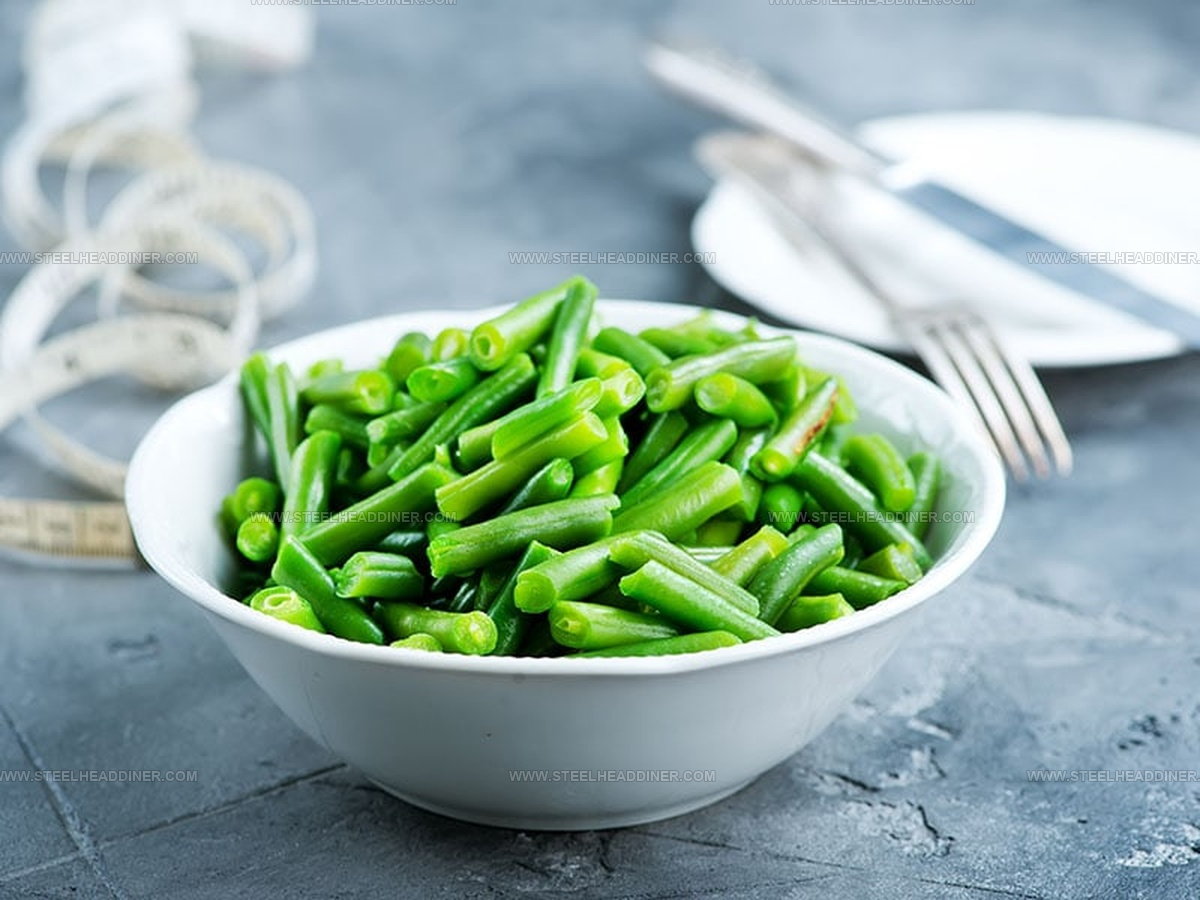
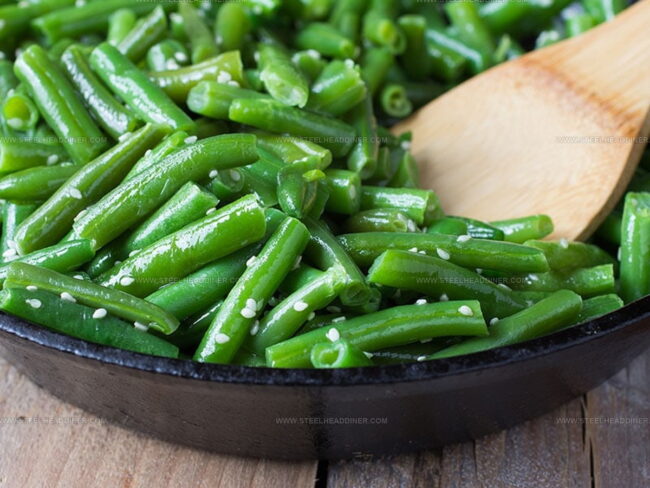

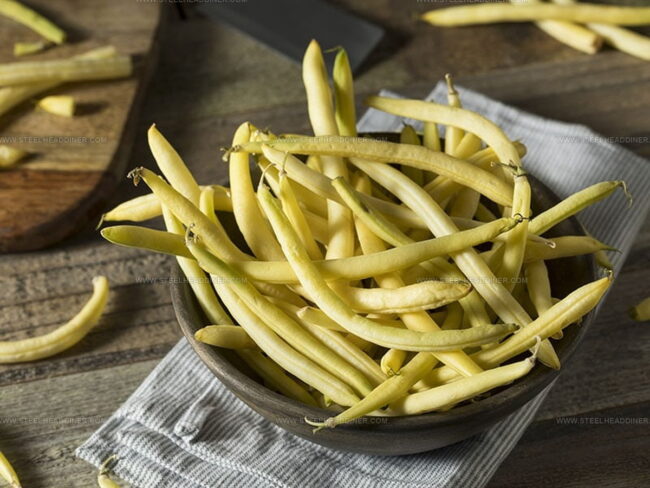
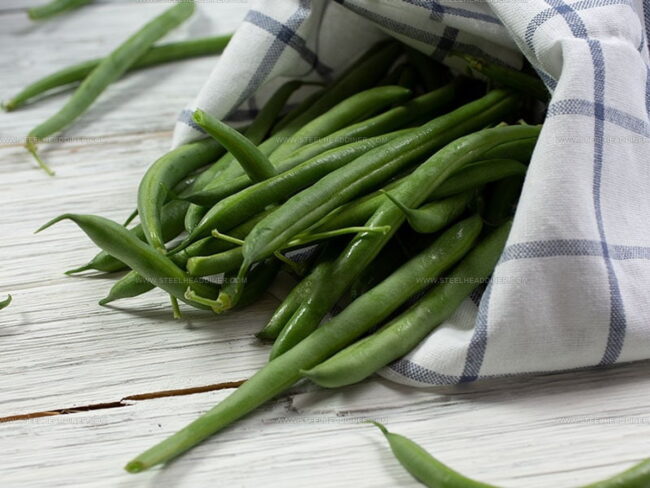
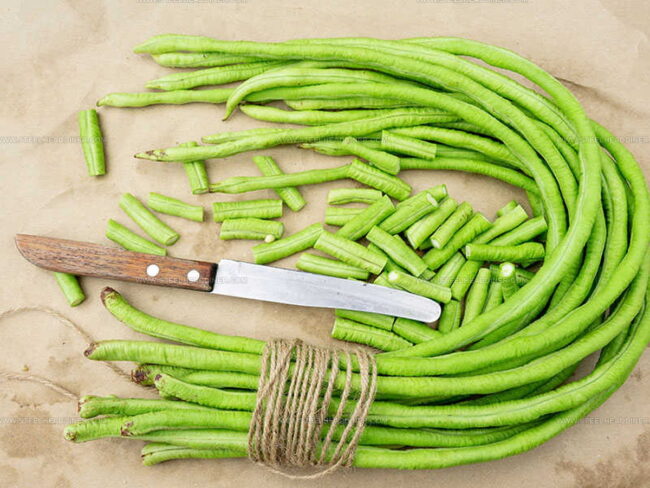
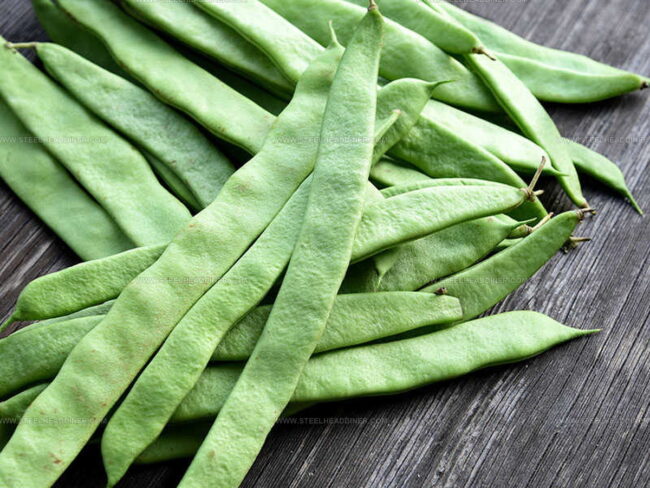
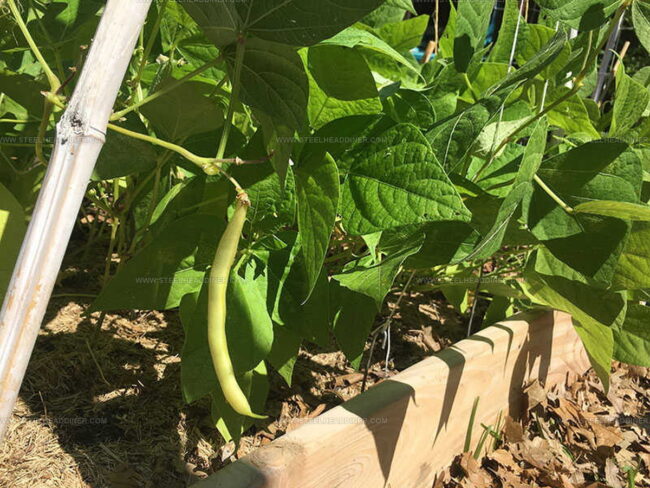
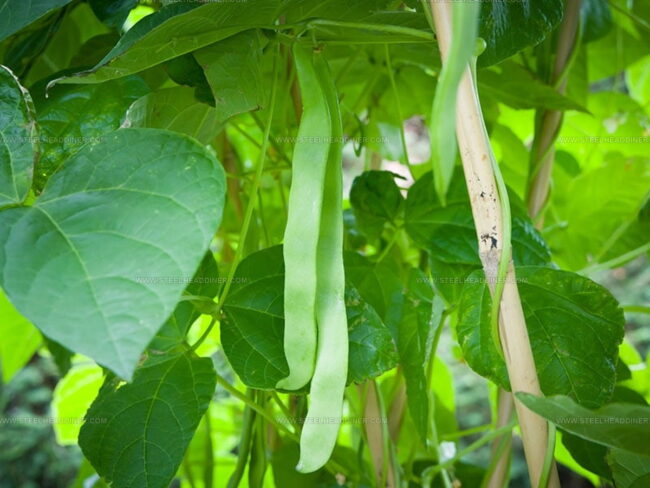
Maya Thompson
Culinary Content Creator & Nutrition Enthusiast
Expertise
Healthy single-serving recipes, Meal prepping for individuals, Integrating nutrition into everyday cooking, Vegetarian and plant-based cuisine
Education
The Chef’s Academy at Harrison College
Associate of Applied Science in Culinary Arts
Focus: Nutrition, meal planning, and culinary techniques for healthy living.
Maya found her passion in the kitchen by mixing good food with good energy. After earning her culinary degree at The Chef’s Academy at Harrison College, she made it her mission to keep cooking simple, wholesome, and packed with flavor.
At Steelhead Diner, Maya shares easy, healthy recipes built for real life. For Maya, great food seems like a celebration of everyday moments, made better one fresh bite at a time.